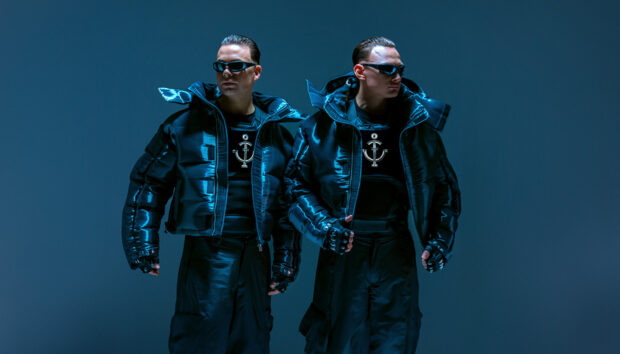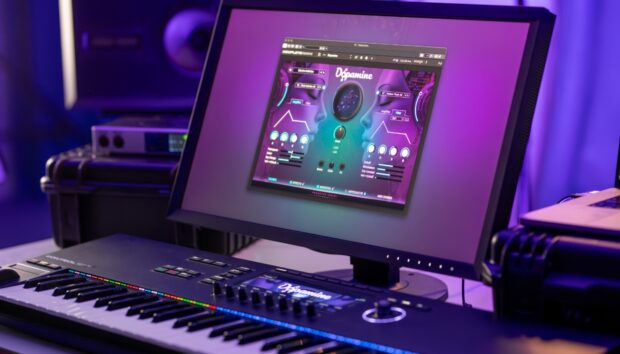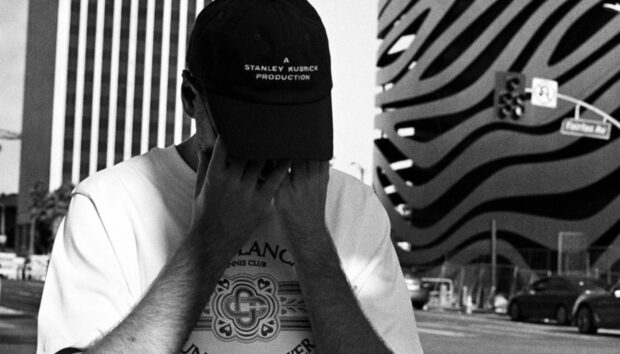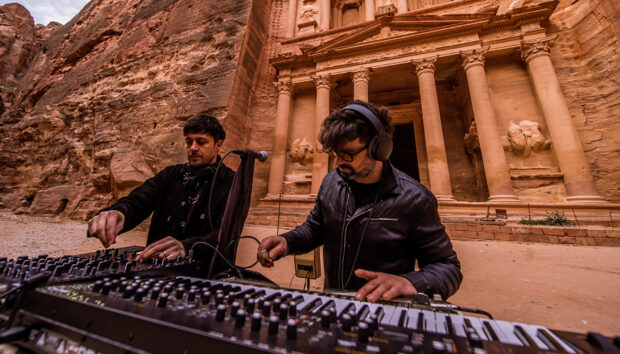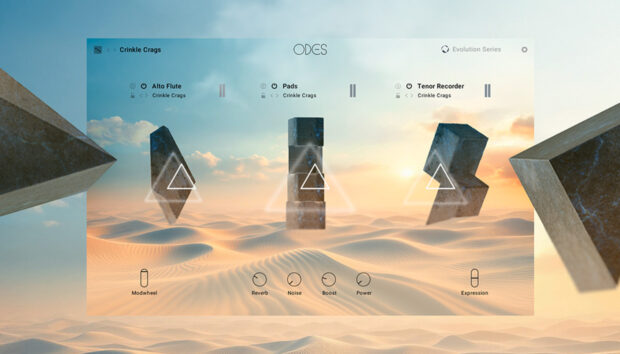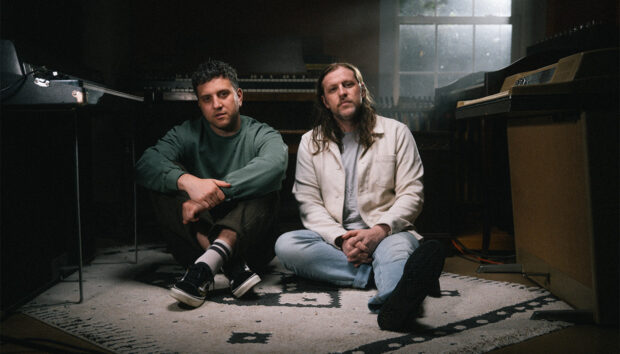
Rap is one of the most successful and beloved music genres of all time. Invented by Black artists in the South Bronx in the 1970s, it has gone on to take over the world. Rap’s basic ingredients are simple: a rhythmic, spoken vocal and a hip hop beat. But these elements have been flipped around in countless ways over rap’s five decade history, giving us weird and wonderful rap genres of all kinds.
In this article, we’ll run down the top 20 rap styles that have defined hip hop. Some are gritty and raw, others polished and party-friendly. Some have dominated the charts while others belong to niche communities in particular cities. All of these rap genres have been crucial in the development of rap, helping to expand the possibilities of the genre and introduce us to thrilling new hip hop sounds.
Jump to these sections:
- How many kinds of rap are there?
- What defines the rap genre?
- What makes rap a genre?
- What are the three main subgenres of hip hop?
- Top 20 rap genres that have defined hip hop
- Start exploring rap genres in your music
Follow along with this tutorial using hip hop samples from Native Instruments.
How many kinds of rap are there?
It’s impossible to say exactly how many kinds of rap there are, but we could list dozens of different rap genres, from feel-good Old School to spine-chilling Horrorcore, crossover Pop Rap, and beyond. Rap is one of the most popular music genres of all time, and it’s taken countless forms in its 50 year history. In this article, we’ll explore the 20 most important types of rap music.
What defines the rap genre?
Rap is a genre of music developed by Black musicians in the US, centered around a rhythmic, spoken vocal delivery. Beyond this basic definition, there have been countless different types of rap over the years. Rap can be propulsive or laid back, aggressive or mellow, jazzy and sample-based or futuristic and synth-heavy. We’ll take a look at the diversity of rap genres in this article.
What makes rap a genre?
Rap is a genre because its key elements make it distinctive: rhythmic, spoken vocals and hip hop beats. These elements are so powerful original that they have become recognized worldwide, making rap one of the most successful music genres of all time.
What are the three main subgenres of hip hop?
Hip hop can be separated into countless subgenres, but the three most important relate to the three regions of the US that are most important in rap: the East Coast, the West Coast, and the South. Each of these three subgenres can be further subdivided into different rap styles. For example: the East Coast is famous for the raw sound of boom bap. The West Coast invented smooth, sleazy G-funk. And the South has brought us unmistakable rap genres like Bounce and Crunk.
Top 20 rap genres that have defined hip hop
1. Old school
In the early days, rap wasn’t separated into distinct genres. The fundamentals of the music were still being developed, and new ideas appeared all the time. Later on, rap fans would call these formative years the “old school” era. We’re using the term as a catch-all to describe how the genre developed from the 1970s into the 1980s.
DJ Kool Herc invented rap music while performing at block parties in The Bronx, NYC. Early rap was party music, with rappers delivering straightforward rhymes over loops from disco records. The most famous example might be The Sugarhill Gang’s “Rapper’s Delight” from 1979, which was built on a loop from Chic’s disco hit “Good Times.” This kind of old-school rap is sometimes called disco-rap.
Later, rap embraced new technologies like the drum machine to create a tougher, more futuristic sound. Afrika Bambaataa & The Soulsonic Force’s 1982 hit “Planet Rock” took inspiration from European synth group Kraftwerk, and invented the electro genre as well as pushing rap forward.
As rap progressed, lyrics began to take a darker, more socially conscious turn. “The Message” by Grandmaster Flash & The Furious Five, also from 1982, tells a tale of inner city poverty. Over the years, rap has both celebrated good times and tackled tough social themes. As we’ll see, different genres of rap offer different combinations of fun and gritty realism.
2. Boom bap
Many rap genres can be traced back to a particular region of the USA. Since rap was born in New York, it’s no surprise that many of the greatest rap genres hail from the East Coast. boom bap might be the most celebrated East Coast rap genre. Enjoying its peak from the late 1980s to the early 1990s, many associate the boom bap sound with rap’s golden age.
The name is the clue: boom bap is defined by a hard-hitting drum beat with acoustic kicks and snares, typically sampled from old soul and funk records and processed for maximum impact. Boom bap songs tend to be minimalistic, foregrounding drums and vocals, and using a lot of samples. The rough and raw quality of a boom bap beat came to define the sound of East Coast rap. It can be contrasted with the smoother sounds of West Coast genres like G-funk (which we’ll discuss below).
Legendary New York rap groups like Wu Tang Clan and Mobb Deep were associated with the boom bap sound. KRS-One also helped popularize the genre with his 1993 album Return of the Boom Bap.
Boom bap is one of the most beloved rap genres, and its echoes can be heard across contemporary rap. If you want to explore boom bap yourself, you can explore classic sampled drums with our Empire Breaks Play Series instrument, and get hold of boom bap-inspired sample packs like Basement Era and Borough Chops.
3. Gangsta rap
As Grandmaster Flash’s “The Message” showed, social commentary was part of rap music from early on. Starting in the late 1980s, rappers began to tackle themes of criminality and conflict even more explicitly, often adopting the personas of gangsters and street hustlers.
Gangsta rap originator Ice-T was born in New Jersey, but moved to LA as a teenager. Gangsta rappers could be found across the US, and gangsta rap has taken on a variety of sounds over the years, from gritty boom bap to smooth G-funk stylings and beyond. But this rap genre is most closely associated with West Coast rap.
Gangsta rap records like N.W.A.’s 1988 “Fuck Tha Police” and Ice Cube’s 1990 “AmeriKKKa’s Most Wanted” caused massive controversy and changed the face of US popular culture. They also show the genre’s complexity. While many argued that gangsta rappers glorified crime, these artists also voiced powerful criticisms of racist policing and other social issues.
4. G-funk
G-funk grew out of West Coast gangsta rap to become one of the most successful types of rap music ever. Former N.W.A. member Dr. Dre kicked off the genre with his 1992 album The Chronic, which showed that the gritty themes of gangsta rap could be channeled into top-selling chart music. Death Row Records, the label Dre founded with Suge Knight, became one of the most important rap institutions of all time, hosting G-funk artists like Snoop Dogg and 2Pac.
G-funk’s innovation was to make rap smoother. Taking its name from P-Funk (the psychedelic 1970s funk of bands like Parliament and Funkadelic), G-funk used laid-back grooves and soulful leads. This often meant working with real musicians rather than samples, leading to a cleaner, fuller sound. The squiggly leads in Snoop Dogg’s “Gin And Juice” are an iconic feature of the genre.
G-funk’s lyrical themes also shifted from gangsta rap, focusing on partying and getting high rather than the hard hustle of a life of crime. The playful house party video for Dre’s “Nuthin’ But A “G” Thang” captures G-funk’s mood. In a way, G-funk moved rap back towards the feel-good vibe of early disco-rap. But it had a darker undertone reflecting shifts in US society in the ‘80s and early ‘90s.
Want to capture some smooth G-funk flavors in your own tracks? Try the Marble Rims expansion, which gives you analog synth leads, thick basses, and everything else you need to summon authentic West Coast atmosphere.
5. Dirty south
Rap music isn’t just about East and West. The Southern US also made vital contributions to the evolution of rap. Often referred to by the umbrella term Dirty south, great rap genres have come from across the South – particularly Atlanta, New Orleans, Texas, and Florida.
It took a little while for Southern rappers to get their voices heard over the loud conversation taking place between East and West. But from the early ‘90s, artists like The Geto Boys (from Houston) and OutKast (Atlanta) began to make waves. They reflected the rich culture of the South with a soulful, layered sound. Blues and gospel influences were obvious, and live players added groove to the music.
In other parts of the South, rap had an uptempo, party-rocking sound – as in the Miami Bass subgenre, which used snappy drum machine rhythms to build on the electro genre invented by Afrika Bambaataa.
Dirty south is one of the most influential rap genres of all time, and its sounds still animate rap music today. Get some Southern soul in your own tracks with the Headland Flow expansion, which offers bluesy bass and keys and funky breaks for an authentic taste of the dirty south.
6. Jazz rap
Jazz and rap: two of the great Black American music genres. It seems natural to combine them, and many of rap’s greatest artists have done just that. Jazz rap can’t be tied to a single location or era in rap music history. Instead, combining these two genres is a tendency that crops up again and again throughout rap.
A Tribe Called Quest set a high bar for jazz rap with their 1991 album Low End Theory. They combined smart jazz sampling with even smarter lyrics, crowning a golden era for jazz rap that included artists like Digable Planets and the Jungle Brothers.
The jazz rap genre declined later in the ‘90s, but it never died. Eccentric beatmakers Madlib and MF DOOM revived the genre in the 2000s, creating one of the great jazz rap albums in 2004’s Madvillainy.
Detroit was an important hub for jazz rap, with producers like J Dilla pushing jazz sampling in bold directions throughout the ‘90s. Drummer Karriem Riggins is a core member of the Detroit jazz rap scene, and – thanks to Karriem Riggins Drums – you can capture some of his unmistakable groove in your own productions. Native Instruments also offers plenty of Expansions for all your jazz rap sampling needs: check out the Rare Vibrations Expansion for juicy jazz sounds, and the Crate Cuts Expansion for a tour through the sample-heavy sound of Madlib and MF DOOM.
7. Conscious rap
Conscious rap is a rap style that addresses political and social themes. Conscious rappers are often interested in Black empowerment, and they criticize racial injustice and social and economic inequality. They might also be critical of the hustler persona projected by gangsta rappers.
Conscious rap crops up throughout rap history. Ice Cube is mostly associated with gangsta rap, but he also wrote rap songs criticizing police violence that could be considered conscious rap – like 1990’s “Dead Homiez.”
Through the ‘90s, artists like Chicago’s Common and New York’s Mos Def and Talib Kweli were closely associated with conscious rap. All three appear on “Respiration,” which comments on the unfairness of life in New York City.
Are you into the golden era conscious hip hop of Mos Def and Talib Kweli? Check out the Hazy Days expansion, which gives you over a hundred authentic kits perfect for soulful rap productions.
8. New Orleans bounce
Before Southern rap took over the world, there was bounce. This party-friendly rap style emerged in the housing projects of New Orleans. It laid the foundations for future Southern genres like Atlanta Crunk (which often sampled the chanted vocals from bounce tracks).
Bounce channels the feelgood energy of DJ Kool Herc’s original hip hop block parties. Its propulsive breakbeats and call-and-response chants invite you to dance rather than reflect. Just check this early bounce hit by DJ Jubilee, the so-called “King of Bounce,” which relies on catchy repeating chants rather than clever lyrics or heavy bass.
Bounce reminds us that there’s a fine line between rap and club music – a fact also demonstrated by other regional genres like Jersey Club and Baltimore Club. Bounce is also an important home for women and queer artists in rap. Queer rapper Big Freedia was a key popularizer of the genre. His voice was even sampled by Beyonce on “Break My Soul.”
9. Horrorcore
Horrorcore is the dark cousin of conscious rap. This style of rap focuses on gruesome, transgressive themes to disturb and shock the listener. It originated in the South, with Memphis group Three 6 Mafia defining the template. Tracks like “Fuck Wit Dis Click” combined melancholy beats reminiscent of horror movie soundtracks with shockingly violent lyrics. Even listeners hardened by gangsta rap could be shocked by horrorcore.
Since then, the horrorcore tendency has popped up throughout rap culture. Whenever a rapper gets the urge to shock listeners with the most disturbing rhymes they can think of, you could call it horrorcore. The genre’s most famous proponent might be Detroit rapper Eminem, who shocked suburban parents and reconfigured rap with the smash hit Slim Shady LP in 1999.
More recently, Odd Future’s Tyler, The Creator has taken up the horrorcore mantle – showing that there are always new ways to shock listeners.
10. Crunk
Crunk is a wild hybrid rap genre that could only have emerged in the South. It combines the party chants of bounce with the darker tone of Three 6 Mafia-style horrorcore, for a disturbing and irresistible take on party rap. Crunk was big in the charts in the early 2000s, making it one of the more commercially successful types of rap music.
Crunk’s sharp beats and brash synths foreshadow the trap genre that would take over the rap world a few years later. But the most distinctive feature of Crunk is the vocals: gnarly, shouted hooks that sound fun and aggressive at the same time. The most iconic voice in Crunk, Lil Jon, is responsible for some of the genre’s biggest hits, like 2002’s “Get Low.”
Three 6 Mafia also got in on the Crunk game, transforming their dark horrorcore into a more upbeat and party-friendly sound.
Crunk hit the mainstream with Usher’s 2004 song “Yeah!”, which used Lil Jon’s gnarly shouts as the hook for one of the biggest chart hits of the decade.
We revisited Crunk’s transition into the mainstream in our Golden Kingdom expansion, which blends the spirit of Southern hip hop with EDM synths to bring you all the samples you need for a huge, chart-ready rap sound.
11. Hyphy
The South doesn’t have a monopoly on party-starting rap genres. Where Memphis had Crunk, the San Francisco Bay Area had Hyphy. The word is slang for “hyperactive,” and was coined by genre originator Keak Da Sneak. It just about sums up this unique rap genre: upbeat rhythms, booming bass, and chaotic vocals featuring shouts, stumbling rhythms, and wordless chants. Like Crunk, Hyphy is fun and a bit unsettling at the same time.
Hyphy took shape in the 1990s, before finding mainstream success in the mid 2000s. E-40’s “Tell Me When To Go” was the commercial peak of the genre. Its quirky whispered and shouted vocals make for one of the weirdest rap hits of the time.
Hyphy went on to influence the “Ratchet” style of DJ Mustard, helping shape the sound of chart-topping party rap in the 2010s. Just check the infectious bounce of Tyga’s “Rack City” to hear how Hyphy filtered into wider rap culture.
12. Chopped and screwed
Chopped and screwed isn’t so much a rap genre as an ethos. Where party rap genres like Crunk and Hyphy amped up the music to make it fun and danceable, Houston’s DJ Screw took rap in the opposite direction. Inspired by the anesthetizing effects of Purple Drank (a drink made from cough syrup and soda), DJ Screw slowed rap right down.
DJ Screw reached a wide audience with his 3 ‘n The Mornin’ album in 1994, which remixed rap tracks by Dr. Dre, Ice Cube, and others, pitching them down and looping sections to create hypnotic new tracks.
Dj Screw made over 350 mixtapes in his unique style before dying from a codeine overdose in 2000. In the process, he inspired generations of producers interested in finding new spaces and grooves in rap music. In the late 2000s, the Cloud Rap genre combined a Chopped and screwed feel with dreamy synths for a unique spin on rap. More recently, the “Slowed + Reverb” trend continues DJ Screw’s legacy, slowing down rap and pop songs to show them in a fresh light.
13. Trap
Trap might be the most influential rap genre of the last two decades. Whenever you hear booming 808 bass, rapidfire hi hats, or stuttering triplet beats in a rap or pop track, you have trap to thank for it.
Originally, trap was another product of the South. It was pioneered in Atlanta by rappers T.I., Jeezy, and Gucci Mane. The name refers to a trap house – a house used to sell drugs – and lyrically trap was a gritty update of gangsta rap, telling tales of street hustling and drug dealing.
Trap didn’t dominate the charts until a few years later. Producer Lex Luger popularized the sound, making over 200 tracks in the style in 2010 and 2011. He created a streamlined version of trap, focussing on the genre’s most striking, and easily translatable, elements. You can hear Lex Luger’s style in Waka Flocka Flame’s 2010 album Flockaveli, where his pummeling beats and dramatic horn samples are the perfect complement to Flocka’s confrontational lyrics.
EDM producers took this version of trap and ran with it. Focussing on the booming bass and syncopated rhythms, producers like Baauer and DJ Snake turned trap into a danceable instrumental genre that would pack out clubs and festivals throughout the 2010s.
In the 2020s, trap’s influence has hardly declined. Pop artists from Cardi B to Ariana Grande are inspired by the sound. It’s even spawned chart-dominating subgenres, like the “country trap” of Lil Nas X’s “Old Town Road.”
Stock up on trap drums for your productions with our Electric Touch expansion.
14. Chicago drill
Drill is a slower, darker variant of the trap genre. Emerging in Chicago in the early 2010s, drill took trap’s dark themes and sharp percussion even further, providing a contrast to glossy mainstream rap.
Chief Keef is the most famous Chicago drill artist. His breakout track “I Don’t Like” showcases the genre’s powerful beats and straightforward vocal flow. Listening to it, you can understand why Pitchfork called drill the most important rap subgenre of the 2010s.
Off the back of this track, Keef – who was just 16 years old – signed a multimillion dollar deal with Interscope. Many consider the drill genre to have fizzled out after getting so much industry attention.
But it had a big influence on the rap genres that followed – including UK drill, one of the most significant recent rap genres (which we’ll discuss later).
You can explore the rise and evolution of US and UK drill with Deft Lines, an accessible instrument that puts drill’s sliding subs, sparse melodics, and twisted samples at your fingertips.
15. Grime
Rap music was born in the US, and so far all of the genres we’ve explored have come from there. Grime is the exception: a uniquely British rap style developed in the housing estates of East London.
Starting in the early 2000s, grime artists took inspiration from British dance music – particularly UK Garage – to develop a unique sound and vocal style. This doesn’t mean that grime is a party-friendly rap genre like bounce or crunk. With its angular beats, futuristic synths, and aggressive vocal flow, grime can be a challenging listen. But it’s playful too: just check the manic energy of Dizzee Rascal’s 2003 breakout track, “I Luv U.”
After some mainstream success, grime sunk into the background in the late 2000s. But it re-emerged in the 2010s. Singles like Skepta and JME’s “That’s Not Me” made the genre more successful than ever.
A new wave of grime artists like Stormzy became international stars, with the help of co-signs from rap kingpins like Drake. Since then, grime has mostly given way to UK drill. But it remains an influential rap genre with a unique sound.
Inject some futuristic grime flavor into your tracks with the London Grit expansion, a comprehensive sample pack of thunderous bass, punchy one-shots, and distortion and glitch effects.
16. UK drill
UK drill is what happens when US and UK rap styles meet. This rap genre came about when London producers raised on grime took inspiration from Chicago drill. They sped up the beats and added rhythms and vocal flows inspired by London’s diverse culture.
Drill got big in the late 2010s. Unknown T’s “Homerton B” was the first UK drill song to hit the UK charts. It showcases the genre’s high-energy rhythms, sliding basslines, and raunchy lyrics.
UK drill has only gotten bigger in recent years. It’s also got poppier, fusing with R&B, afrobeats, and other chart-friendly genres. Central Cee’s “Doja,” one of the biggest rap songs of 2022, shows how playful and catchy UK drill can be. Built around a sample from Eve’s 2001 rap hit “Let Me Blow Ya Mind,” it also reflects the ongoing conversation between UK and US rap.
You can harness the power of UK drill in your own tracks using Expansions from Native Instruments. Try Lockdown Grind for melancholy keys, heavy bass slides, and punchy processed drums. Young Phantom captures the sound of the genre as it went international, with R&B melodies, afrobeat swing, and twisted vocal cuts.
17. Pop rap
Pop rap is a genre that combines the beats and vocals of rap with the catchy melodies and accessible structures of pop music. It’s a potent combination, making for some of the most memorable songs in rap history.
Rappers have been getting inspired by pop for decades. In the ‘80s, artists like LL Cool J and The Beastie Boys brought a pop sensibility to rap music, embracing hooky sounds and cartoonish personas. LL Cool J’s 1987 song “I Need Love” was one of the first pop rap hits, combining rap lyricism with a smooth ballad instrumental.
Pop rap found its feet in the 1990s. Compared to the rawness of boom bap or the gritty themes of gangsta rap, ‘90s pop rap was often considered lightweight and commercial. But a song like MC Hammer’s 1990s single “U Can’t Touch This” is undeniably catchy. By bringing humor and strong melodies to rap music, pop rap showed another side to the genre.
In the 2000s and 2010s, pop rack became brash and synth-heavy, combining party-starting rap styles like Crunk with modern R&B and EDM. Pop rap artists like Nelly, Nicki Minaj, and Pitbull became some of the biggest artists of the era. Flo Rida’s “Low” might be one of pop rap’s most potent earworms.
Pop rap continues to be one of the biggest rap genres. Each new breakout genre of rap combines with the pop music of its time to create a fresh pop rap hybrid. One such hybrid is mumble rap, a fusion of trap with emotive R&B, powered by distinctive autotuned vocals. Mumble rap hits like Playboi Carti’s “Mileage” are both quirky pop songs and cutting-edge rap tracks.
18. Rap rock
Rap and rock have important similarities. Both genres are high energy, dramatic, and fun. Both rely on powerful vocalists and strong hooks. Rap and rock artists have been exploring these crossovers for decades. One of the earliest rap rock hits was Run DMC’s 1986 cover “Walk This Way” by Aerosmith, which combined guitar riffs with bombastic rap drums.
In the ‘90s, rock musicians who had grown up hearing rap music began integrating the genre into their songs. Bands like Rage Against The Machine brought rap rhythms and vocal stylings to their riff-heavy rock songs. This genre combination helped convey their confrontational political message.
From the late ‘90s, a wave of bands took the idea further. The likes of Papa Roach, Limp Bizkit, and Linkin Park brought angst and swagger to rap rock – often featuring a turntablist in their lineup to cement their hip hop credentials. This golden era of rap rock is often looked down on by rap fans. But it did help bring rap to new audiences.
Rap rock persists in many weird and wonderful forms. Just check out Lil Yachty’s 2023 album Let’s Start Here, which combined the rapper’s autotuned vocals with psychedelic rock instrumentals for a unique take on rap rock.
19. LA beat scene
Most of the rap genres in this list are led by vocalists. After all, it’s the rappers who make rap what it is. But there are also important genres of instrumental rap that have been influential on rap as a whole – and helped shape music beyond rap, too. One such genre emerged in LA in the late 2000s.
The LA beat scene sprung up around the Low End Theory club night, launched by Daddy Kev in 2006. Producers who hung out at this club night took inspiration from innovative producers like J Dilla and Madlib to shape a new kind of rap. J Dilla, who died in 2006, found bold new ways to shape rap rhythms and twist samples. His posthumous album, Donuts, was highly influential in rap music.
Young LA beat scene producers like Flying Lotus took J Dilla’s sound further. The grandnephew of spiritual jazz artist Alice Coltrane, FlyLo brought a psychedelic flavor to rap, combining it with soul and electronica to carve a new niche in the genre. Flying Lotus’s Brainfeeder is one of the most influential labels in experimental rap.
The LA beat scene had a big influence on the rap genres that followed. Some beat scene artists, like Nosaj Thing, pioneered a chilled-out style of rap music that influenced the Lofi genre that now dominates Spotify.
Native Instruments offers several Expansions to help you dive into the psychedelic LA sound. Drift Theory gives you synths, vocals, keys, and drums inspired by the Low End Theory scene. Backyard Jams captures the sound of this genre as it expanded round the world, fusing with eclectic dance music. And Magnetic Coast offers hybrid kits for Maschine and Battery inspired by the sound of Flying Lotus.
20. Lofi
Lofi is the most popular instrumental rap genre today. While vocal rap is as popular as ever, the demand for relaxing instrumental rap has grown massively in the past decade, as listeners surf Spotify looking for the perfect background music for chill evenings or study sessions.
Lofi emerged to meet the demand. This rap genre features laidback beats, scuffed samples, jazzy chords, and gentle atmospheric sounds like pattering rain. It echoes historical rap genres like boom bap, jazz rap, and the soulful sounds of the LA Beat Scene. But it’s smoother than these genres, designed to sink into the background as you go about your day. Lofi artists like jinsang have built a huge online following with their smooth, tasteful beats.
You can add a little soothing lofi sound to your own productions with Native Instruments tools. The Sway instrument gives you soulful piano, guitar, and synth samples, treated with analog gear and playable via an intuitive interface. And the Faded Reels expansion celebrates the Lofi takeover with a bumper sample collection of fuzzy chords, dusty drums, and pastel textures.
Start exploring rap genres in your music
In this article, we’ve run down the 20 most influential rap genres. We explained the sound, context, and influence of these different genres of rap. We also pointed you towards tools and tutorials for getting inspired by these rap genres in your own music productions.
Now it’s time to take all this inspiration and turn it into music. Explore rap sample packs from Native Instruments, and find just the sounds you need for your next production.









